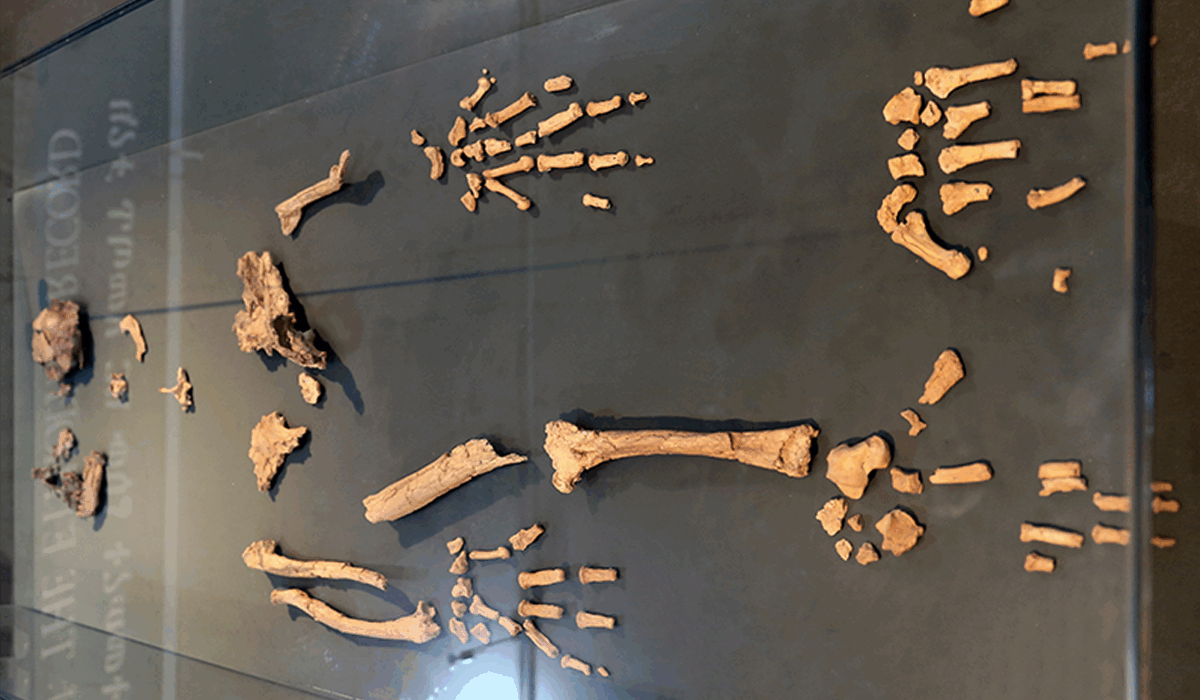For more than a century, scientists have been piecing together the puzzle of human evolution, examining fossil evidence to understand the transition from our earliest ancestors to modern humans.
A new study from Washington University in St. Louis, published October 15 in Communications Biology, presents compelling evidence to support the hypothesis that humans evolved from an African ape-like ancestor. With this discovery, which challenges previous findings, researchers are able to narrow the range of explanations for the origin of human lineage. In doing so, scientists are one step closer to answering one of life’s greatest questions, “where do we come from?”

The research, led by Thomas (Cody) Prang, assistant professor of biological anthropology in Arts & Sciences at WashU, revisits the breakthrough discovery of the 4.4-million-year-old Ardipithecus — nicknamed “Ardi” — which was discovered in 1994.
Ardi is one of the oldest and most complete skeletons to ever be discovered. Approximately 1 million years older than “Lucy,” another well-known early human ancestor skeleton, Ardi represents an earlier stage of human evolution, according to Prang.
“One of the surprises in this discovery was that Ardi walked upright, yet retained a lot of ape-like characteristics, including a grasping foot,” Prang said.
“Apes, like chimpanzees and gorillas, have a big toe that’s divergent, which allows them to grip tree branches as part of a climbing lifestyle. Yet it also had features that align with our lineage. That makes Ardipithecus a true transitional species.”
Researchers initially proposed that Ardi demonstrated a generalized form of locomotion rather than behavior typical of African apes, leading them to conclude that this very early human ancestor was not similar to apes after all, Prang said. That came as a big surprise to the paleoanthropology community.
“Based on their analysis, they concluded that living African apes — like chimpanzees and gorillas — are like dead ends or cul-de-sacs of evolution, rather than stages of human emergence,” Prang said. “Instead, they thought that Ardi provided evidence for a more generalized ancestor that wasn’t similar to chimps or gorillas.”
Rethinking Ardi
By studying chimpanzees’ and gorillas’ talus — the large bone in the ankle that joins with the tibia of the leg and the calcaneus (heel) of the foot — researchers can decipher how they move — specifically, how they climb trees vertically. This important bone also offers insight into how early species transitioned to bipedal (two-legged) locomotion.
For this study, Prang and colleagues compared Ardi’s ankle to the ankles of apes, monkeys and early humans. Their analysis showed that Ardi’s ankle is the only one in the primate fossil record that shares similarities with African apes.
According to Prang, these apes are known for their adaptations to vertical climbing and terrestrial plantigrade quadrupedalism — a form of locomotion where an animal moves on four limbs on the ground with the entire soles of its feet, including the heel, touching the surface — hinting that Ardi might have used its feet similarly. In addition to these primitive features, Ardi’s talus also exhibited characteristics suggesting an enhanced push-off mechanism in the foot. This complexity indicates a blend of climbing and walking behaviors in this early hominin species, which is pivotal in understanding the evolution of bipedalism.
“The finding is both controversial and also aligned with what people thought originally,” Prang said.
“Nobody disputes the importance of the discovery (of Ardi), of course, but many people in the field would say the initial interpretation was probably flawed. And so, this paper is a correction of that initial idea that distanced Ardi from chimpanzees and gorillas.”
It’s important to note that this paper does not imply that humans evolved from chimpanzees. However, the research adds more evidence to the hypothesis that the common ancestor humans share with chimpanzees was probably quite similar to the chimpanzees living today, Prang explained.
Contributing to the study are Matthew W. Tocheri at Lakehead University in Thunder Bay, Canada; Biren A. Patel at University of Southern California; Scott A. Williams at New York University; and Caley M. Orr at the University of Colorado Anschutz.



